Who Struggles to Repay Their Student Loans and What Can Colleges Do to Help?
By David Sheridan, Director of Financial Aid at Columbia University School of International and Public Affairs
Financial aid has long been on elected officials’ radar; names such as Pell, Perkins, Stafford and Ford that have been part of the financial aid lexicon for decades are, after all, names of federal lawmakers who championed Title IV aid programs.
But we’ve never seen it elevated to this level of awareness; paying for college is now a front-burner issue for many presidential hopefuls, and the primary reason for this is that Americans owe over $1 trillion in student loans. So it was no surprise that the program for the 2019 NASFAA National Conference included at least a dozen sessions for attendees to discuss various aspects of student borrowing. There is always a lot to learn.
When perusing the agenda and deciding what sessions to attend, “Who Struggles to Repay Their Student Loans and What Can Colleges Do to Help?” caught my eye. Presented by Colleen Campbell from the Center for American Progress (a former aid administrator), Helen Faith from Lane Community College, and Neha Dalal from the Institute for College Access & Success, the session offered significant insight and data showing populations encountering the greatest challenges to repayment. We know about average debt and default rates, but did you know that Pell Grant recipients who earn a bachelor’s degree are five times more likely to default than higher income students? And that on average, they borrow $4,500 more than non-Pell recipients? Or that borrowers who successfully complete certificate programs default at a similar rate to borrowers who drop out? That African American bachelor’s degree recipients are seven times more likely to default within 12 years than white borrowers? Underrepresented students, non-traditional students, students who are parents … all at more risk of difficulty in repayment.
There are many issues at play here; America suffers from wage inequality along gender and racial lines, and there’s little we can do in our offices to change that. But what can we do? What data have you collected about your own borrowers, while they’re enrolled or afterwards? How do borrowing levels among different groups of students factor into institutional policy regarding packaging or emergency aid? Are your student budgets realistic and transparent? Are there ways, as Lane Community College has done, to provide additional information about borrowing as part of application or award notification procedures? Knowing this information, should we consider different loan counseling and default prevention initiatives?
Yes, many students borrow and repay successfully. But as we approach America’s second trillion dollars of student loans, there’s still much to be learned as to how we can make this a more effective process for students and taxpayers as well as our places of employment.
Publication Date: 7/2/2019
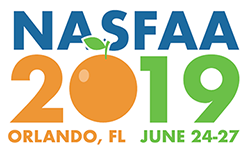




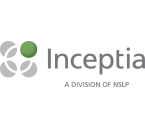

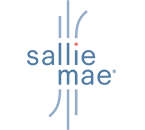
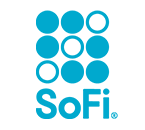


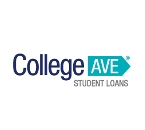
Jeff T | 5/11/2023 10:6:02 AM
In the late 1960s, 40% of the students hailing from families in the top quartile earned a Bachelor's degree by age 24 while only 6% of students from the bottom quartile achieved the same milestone. By 2013, 77% of the top quartile's students had earned their Bachelor's degrees by age 24 compared with only 9% of the bottom quartile's students. This underscores the CATASTROPHIC failure of "means tested" federal aid programs. Sure, the bottom quartile showed a 50% improvement in roughly half a century, but that's not hard to achieve given the abysmally low numbers to begin with, and not surprisingly, the gap between affluent families and everyone else actually widened. Here's the solution: UNIVERSAL BENEFITS, no more means testing! Means testing adds unnecessary cost for the administrator and unnecessary complexity for the applicants, complexity that invariably results in hurting the very students the programs are designed to serve. Let's have a "PELL for ALL" that covers public university and community college tuition and fees with the caveat that the institutions who benefit from the federal funding agree to never raise tuition by an amount that exceeds the rate of inflation, and of course tie the Pell grant to inflation. Loans can be used for housing, meal plans, textbooks, transportation, etc., after institutional scholarships and state grants have been applied in addition to the Federal Pell. Federal loans should be offered at zero percent interest and the forgiveness programs for teachers, medical professionals and public sector employees should remain in place. There, fixed it. You're welcome. Just as Title IX revealed the degree to which women had been held back, a universally applied system of federal aid will reveal just how much every currently marginalized group has been held back by means tested financial aid. Was the original GI Bill helpful? This idea would have even greater societal impact.
David J | 7/3/2019 4:12:41 PM
Sorry I missed this session, but happy to catch this thoughtful conversation. It reminds me of an old idea that dovetails well with a new idea: Old idea - front loading grant so only students most likely to graduate (and most able to repay) leave school with debt. New idea - tuition free community college so the most vulnerable students, those for whom access to education would most dramatically change their lives and transform society, leave school with no debt to add to the burdens of poverty that already comes with being born in the wrong zip code.
David S | 7/2/2019 3:12:39 PM
Thanks Bob, and interesting suggestions. Do some people potentially qualify for loan forgiveness who aren't very needy? Sure. The problem is that this argument is being used by people as a rationale to kill loan forgiveness for everyone. If perhaps there should be a salary cap instituted in future legislation, let's discuss (and use real data, not just clickbait anecdotes). But we shouldn't get rid of it for the 99% of the qualified borrowers who aren't affluent because of the 1% who are. You don't fine tune a program by eliminating it.
As far as your targeted forgiveness ideas, they're very much supported by the data presented in the session this article is about. Pell recipients, even if they successfully earn a degree, are still more likely to struggle in repayment. Poverty still begets poverty all too often, and that's a national problem that transcends financial aid and higher ed.
Robert F | 7/2/2019 9:2:39 AM
Another well written thought piece David, well done! I keep reading about all of the free tuition and loan forgiveness proposals and I welcome the attention. The proposals always seem to be accompanied by the critics who argue that some well off people will be helped intentionally or unintentionally. My proposal: other then those who should already qualify under the much delayed borrower defense provisions, how about a bill to pay off loans for anyone who has borrowed a federal loan who either currently has Pell grant or who had a Pell grant when the loan was awarded as a start. Also, how about only making subsidized loans to Pell grant recipients and enrolling them all in an income based repayment program with forgiveness at the end. Finally, expand Pell grant so that more will qualify for the above. Just my two cents.
You must be logged in to comment on this page.